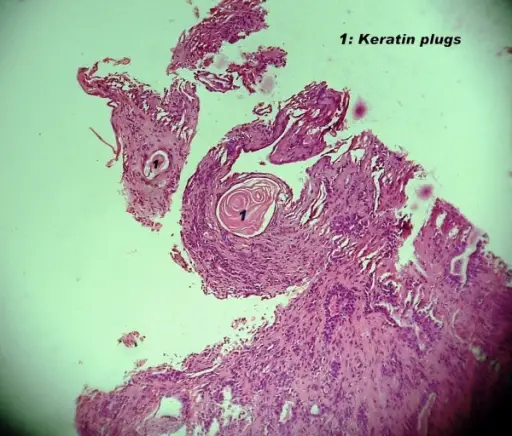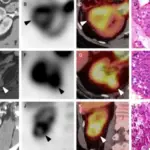Pleomorphic adenoma is the most common salivary gland tumor.
What is the Pathology of Pleomorphic Adenoma?
The pathology of pleomorphic adenoma is:
-Etiology: The cause of pleomorphic adenoma is cellular proliferation.
-Genes involved: PLAG1 fusion (chromosome 8q12) or HMGA2 fusion (chromosome 12q14-15).
-Pathogenesis: The sequence of events that lead to pleomorphic adenoma is the proliferation of myoepithelial and epithelial cells of the ducts and there is also a marked increase in stromal components.
-Histology: The histology associated with pleomorphic adenoma shows epithelial and myoepithelial tissue in a myxoid background.
How does Pleomorphic Adenoma Present?
Pleomorphic adenomas are more common in females. The symptoms, features, and clinical findings associated with pleomorphic adenoma include slow growing, painless, well circumscribed mass involving salivary gland.
How is Pleomorphic Adenoma Diagnosed?
Pleomorphic adenoma is diagnosed by physical exam, fine needle aspiration, and biopsy.
How is Pleomorphic Adenoma Treated?
Pleomorphic adenoma is treated by surgical excision.
What is the Prognosis of Pleomorphic Adenoma?
The prognosis of pleomorphic adenoma is fair.



